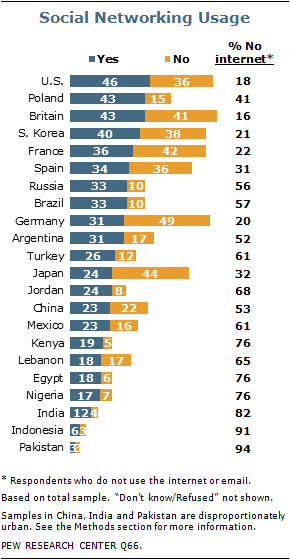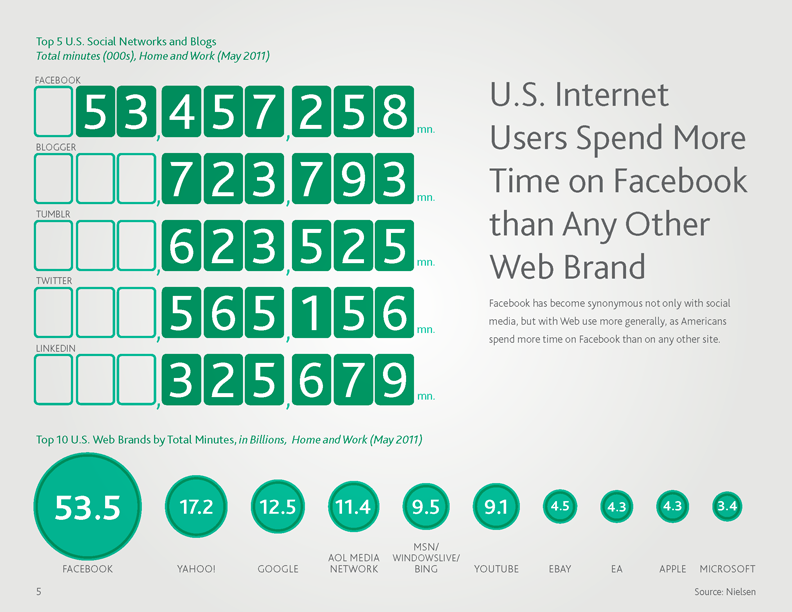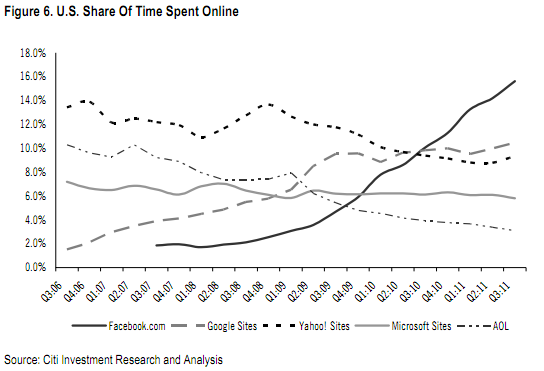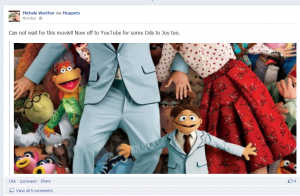It used to be that the marketing department was a cost center. You have a budget and track what you spent each year, adjusting the marketing mix accordingly. CMOs focused on raw tonnage—GRPs, impressions, number of media mentions, and so forth. But painfully missing in the equation was revenue—the kinds of stuff the CEO and CFO care about.

In fact, the board doesn’t care about how many Facebook fans you have, the number of tradeshows you exhibited at, or how many people stopped by your booth. They want to know revenue and ROI. Can you forecast with confidence what would happen to your marketing metrics if you suddenly doubled your marketing budget overnight? Can you quantify the ROI of your efforts in the same way that the sales organization can?
The underlying trend here is that
marketing is measurable. Web analytics tools when used properly allow you to transform yourself from a cost center to a revenue center. Crown yourself as Chief Revenue Officer so that you can focus on results instead of efforts, on revenue instead of costs, on ROI vs. on number of impressions served, on leads generated vs. how you rank on a particular keyword.
When you are seen as a cost center, the CEOs natural reaction is manage you downward—“Hey, try not to spend too much money, okay?” Conceptually, we can agree that marketing’s efforts must be doing something good to enhance the brand and generate attention that somewhere down the line results in more sales. To what degree, nobody has really been able to tell until now.
THE MISSING LINKS
Lead nurturing and marketing automation tools like Marketo and salesforce.com allow you to tie marketing costs against revenue generated. And web analytics will help you associate activities further up the funnel with marketing campaigns, so you know what happens when they became a lead. But that’s not enough. Companies need the following:
Email address collection: Let’s say you’re running some Facebook campaigns or perhaps a contest of sorts. Sure, you generated a lot of traffic, but did it result in long-lasting value and revenue? Were these customers higher or lower value than what you get via other channels? Facebook’s extended permissions allow you to get a fan’s email address in just one click. They need only click “allow”, which they’ll gladly do if you are a trusted brand that is providing something worth them saying yes. Run it through SilverPop, ExactTarget, or whoever you use for email to nurture them there. Bam—that’s Facebook or any other awareness channel now quantified.

Attribution management: Now this one is expensive, difficult, and politically challenging, but well-worth the long-term investment. The idea is that your marketing efforts work together in concert. Different marketing channels play at different points in the AIDA funnel to send the right message at the right time. When you run TV ads, are the folks who manage the website and retail experience aware of it so they can build on that power? How about running a
major Facebook campaign and noticing the effect on organic search traffic, because you have greater awareness, which stimulates more searches? Yes, the dirty secret about search traffic is that the user had to initiate the query to begin with—there is no such thing as demand generation in search. To tie these together, you need click-stream level data to calculate the value of each marketing effort, versus just assigning all the value to the last thing the user did before converting.
Revenue modeling: When you have all these in place, you as CMO can confidently show your impact on sales. You can comfortably say how many leads/conversions will occur at different spend levels and marketing mixes. You can speak in the terms that the CEO and CFO love—ROI, forecasted profits, and customer lifetime value. Now you’re not just some cost center, babbler of metrics that only marketing people care about, or silent party when it’s time to talk overall business metrics.

You as the CMO or the head of analytics must be the one to get these programs underway. Who else in your organization is going to do it? You now have the customer data and access to the databases that measure revenue and conversions. Step up and be the champion.
There is no longer the issue of not having enough data, but rather, not knowing what to do with all the data or having the time and expertise to process it. This is not a job for the IT folks or finance—it takes the keen skills of a marketer, perhaps assisted by the engineers.
My advice to you is to take baby steps, since this is a marathon. Your first easy win? Create a dashboard that sits on a 50 inch monitor outside your office or some public place. That dashboard should show live sales and cost data by marketing channel. People will stop by and watch, in the same way that rubberneckers slow down at accidents to see the wreck. But in this case, it’s to marvel at your success, since all the numbers are up and to the right.
You’ve created job security for yourself and truly owned the customer relationship. Now marketing is no longer the support organization for the sales team, or that “other department” that doesn’t get the respect it deserves. The Chief Marketing Officer is now the Chief Revenue Officer by being the Chief Customer Officer and Chief Data Officer.
About the Guest Author: Dennis Yu is Chief Executive Officer of BlitzLocal, who specialize in the intersection of Facebook and local advertising.  Citizens in the United States are driving the global adoption of social media services such as Twitter and Facebook, according to research conducted by the Pew Research Center in December with over 46% engaged in social networking. Last month they released statistics from another internet snapshot with that number now closer to 59% in the US.
The sites that make up "social networking" do vary a bit by country. For example Orkut (by Google) leads the way in Brazil with 8 in 10 people, as a recent comScore study showed. It was also noted that Twitter.com reached 23% of the entire Brazilian online population, making it the highest penetration in the world (the US is about 8%)
In May of this year a research report from Nielsen showed Facebook in the clear lead across all web brands and commenting that "Facebook has become synonymous not only with social media, but with the Web..." The report showed users spend 23% of their time online across the top 10 social networks.
Citizens in the United States are driving the global adoption of social media services such as Twitter and Facebook, according to research conducted by the Pew Research Center in December with over 46% engaged in social networking. Last month they released statistics from another internet snapshot with that number now closer to 59% in the US.
The sites that make up "social networking" do vary a bit by country. For example Orkut (by Google) leads the way in Brazil with 8 in 10 people, as a recent comScore study showed. It was also noted that Twitter.com reached 23% of the entire Brazilian online population, making it the highest penetration in the world (the US is about 8%)
In May of this year a research report from Nielsen showed Facebook in the clear lead across all web brands and commenting that "Facebook has become synonymous not only with social media, but with the Web..." The report showed users spend 23% of their time online across the top 10 social networks.
 And how is that different from recent years? Citi Investment Research shows us how time spent online has changed from Q3 2006 to Q3 2011. Google and Yahoo - watch out!
And how is that different from recent years? Citi Investment Research shows us how time spent online has changed from Q3 2006 to Q3 2011. Google and Yahoo - watch out! Community is where your customers or potential customers are and it's not necessarily the site you've built. Knowing that - what does your Facebook marketing strategy look like?
Community is where your customers or potential customers are and it's not necessarily the site you've built. Knowing that - what does your Facebook marketing strategy look like? 
 Sometimes, you just need a human to tell you the answer. In the case of local, the majority of information about a location is stored in the brains of humans and not stored in yellow page listings, websites, directory services, and other entities that a machine could sort through.
Sometimes, you just need a human to tell you the answer. In the case of local, the majority of information about a location is stored in the brains of humans and not stored in yellow page listings, websites, directory services, and other entities that a machine could sort through.
 Historically, the local listings services have put up walls to ensure accuracy-- for example, Bing's version. While making it harder to get your listing approved (via long required forms and/or arduous verification) it will provide more complete data but discourages the entry to begin with, further exacerbating the local information problem.
Has Facebook stumbled onto the key to ensure accurate search results by
Historically, the local listings services have put up walls to ensure accuracy-- for example, Bing's version. While making it harder to get your listing approved (via long required forms and/or arduous verification) it will provide more complete data but discourages the entry to begin with, further exacerbating the local information problem.
Has Facebook stumbled onto the key to ensure accurate search results by 
 Map - The map feature plots check-in's and photos across the globe. Also include the new "life events" so you can tag yourself on your honeymoon or the first baby picture at the hospital. The suggest following the tour was to tag your life events, at initial launch I had 19 populated.
Map - The map feature plots check-in's and photos across the globe. Also include the new "life events" so you can tag yourself on your honeymoon or the first baby picture at the hospital. The suggest following the tour was to tag your life events, at initial launch I had 19 populated. Activities -This is private to you and used for changing permissions for sharing. It's neat reminder of events/posts and you can view by year and month.
Activities -This is private to you and used for changing permissions for sharing. It's neat reminder of events/posts and you can view by year and month.

 Star or Hide - You can go through each post and star to be featured or hide from your profile. Here's a featured post of a must see movie. Starring the post has it take up the entire width of the page but it's definitely not going to be missed.
Star or Hide - You can go through each post and star to be featured or hide from your profile. Here's a featured post of a must see movie. Starring the post has it take up the entire width of the page but it's definitely not going to be missed. In fact, the board doesn’t care about how many Facebook fans you have, the number of tradeshows you exhibited at, or how many people stopped by your booth. They want to know revenue and ROI. Can you forecast with confidence what would happen to your marketing metrics if you suddenly doubled your marketing budget overnight? Can you quantify the ROI of your efforts in the same way that the sales organization can?
The underlying trend here is that
In fact, the board doesn’t care about how many Facebook fans you have, the number of tradeshows you exhibited at, or how many people stopped by your booth. They want to know revenue and ROI. Can you forecast with confidence what would happen to your marketing metrics if you suddenly doubled your marketing budget overnight? Can you quantify the ROI of your efforts in the same way that the sales organization can?
The underlying trend here is that 
 You as the CMO or the head of analytics must be the one to get these programs underway. Who else in your organization is going to do it? You now have the customer data and access to the databases that measure revenue and conversions. Step up and be the champion.
There is no longer the issue of not having enough data, but rather, not knowing what to do with all the data or having the time and expertise to process it. This is not a job for the IT folks or finance—it takes the keen skills of a marketer, perhaps assisted by the engineers.
My advice to you is to take baby steps, since this is a marathon. Your first easy win? Create a dashboard that sits on a 50 inch monitor outside your office or some public place. That dashboard should show live sales and cost data by marketing channel. People will stop by and watch, in the same way that rubberneckers slow down at accidents to see the wreck. But in this case, it’s to marvel at your success, since all the numbers are up and to the right.
You’ve created job security for yourself and truly owned the customer relationship. Now marketing is no longer the support organization for the sales team, or that “other department” that doesn’t get the respect it deserves. The Chief Marketing Officer is now the Chief Revenue Officer by being the Chief Customer Officer and Chief Data Officer.
About the Guest Author:
You as the CMO or the head of analytics must be the one to get these programs underway. Who else in your organization is going to do it? You now have the customer data and access to the databases that measure revenue and conversions. Step up and be the champion.
There is no longer the issue of not having enough data, but rather, not knowing what to do with all the data or having the time and expertise to process it. This is not a job for the IT folks or finance—it takes the keen skills of a marketer, perhaps assisted by the engineers.
My advice to you is to take baby steps, since this is a marathon. Your first easy win? Create a dashboard that sits on a 50 inch monitor outside your office or some public place. That dashboard should show live sales and cost data by marketing channel. People will stop by and watch, in the same way that rubberneckers slow down at accidents to see the wreck. But in this case, it’s to marvel at your success, since all the numbers are up and to the right.
You’ve created job security for yourself and truly owned the customer relationship. Now marketing is no longer the support organization for the sales team, or that “other department” that doesn’t get the respect it deserves. The Chief Marketing Officer is now the Chief Revenue Officer by being the Chief Customer Officer and Chief Data Officer.
About the Guest Author: